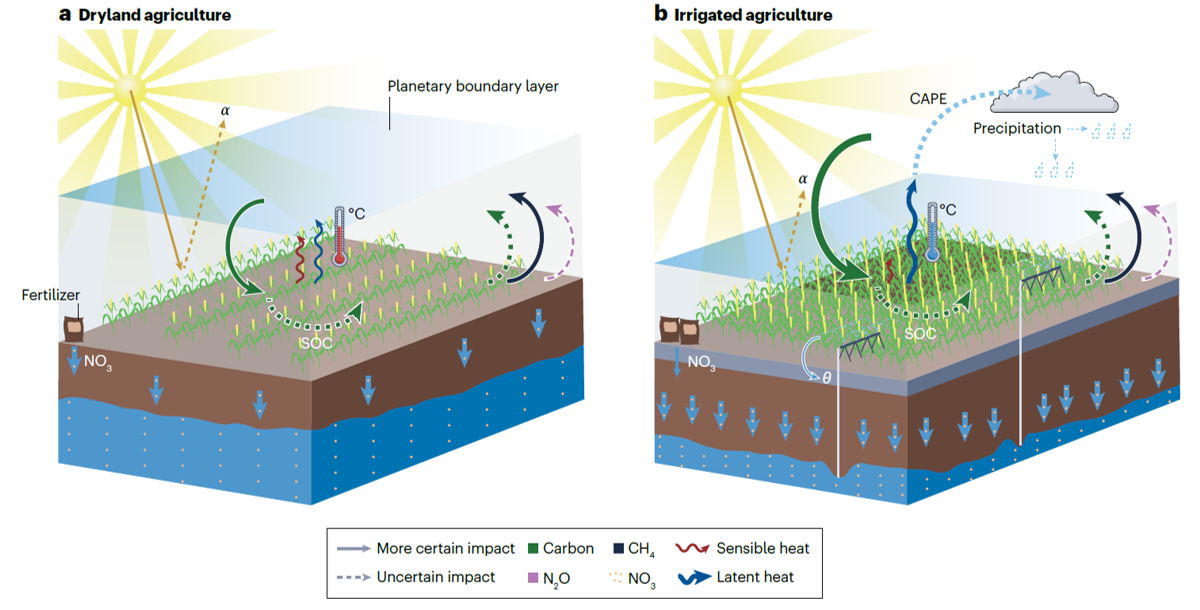August 17, 2023 | Nature Reviews Earth & Environment |
Introduction: A recent study conducted by New York University and NASA Goddard Institute for Space Studies, in collaboration with institutions across the globe, provides an extensive review of the effects of irrigation on the Earth system. This review offers a comprehensive overview of how irrigation practices affect various components of the Earth's complex system.
The Study: The research highlights that irrigation plays a substantial role in global freshwater withdrawals, accounting for around 70% of these withdrawals and consuming approximately 90% of the utilized water resources. It points to over 3.6 million square kilometers of currently irrigated land, with notable hotspots including regions like the intensively cultivated US High Plains, California Central Valley, Indo-Gangetic Basin, and northern China.
Key Findings: The study utilizes process-based models to estimate that more than 2,700 cubic kilometers of irrigation water are withdrawn globally each year, aligning closely with values reported by individual countries. This consistency is maintained despite inherent uncertainties in these estimates. The widespread adoption of irrigation has resulted in the alteration of surface energy balances and biogeochemical cycling. A shift from sensible to latent heat fluxes, coupled with land-atmosphere feedbacks, leads to regional reductions in growing season surface temperatures of approximately 1-3°C. Although irrigation can mitigate temperature extremes in some areas, it may intensify moist heat stress.
Precipitation responses vary among different regions, with some experiencing suppressed local precipitation while others benefit from enhanced downstream precipitation due to interactions within atmospheric circulation patterns. Moreover, the practice of irrigation can contribute to increased carbon uptake in croplands, while simultaneously elevating methane emissions in rice systems and leaching nitrogen into groundwater.
Conclusion: The comprehensive review underscores the need for cross-disciplinary research efforts that integrate various aspects of irrigation's impact on the Earth system. It emphasizes the importance of identifying and reducing uncertainties, biases, and limitations to advance our understanding of these complex irrigation-Earth system interactions.
Read more: Irrigation in the Earth system

Fig. 3 | Irrigation–Earth system interactions. a,b, The key processes and mechanisms through which dryland agriculture (panel a) and irrigated agriculture (panel b) interact with the climate system and biogeochemical cycles. Dark green lines indicate the flows of carbon as CO2 assimilated from the atmosphere from crop photosynthesis, carbon contained in decomposing biomass and soil organic carbon (SOC), and CO2 emitted back to the atmosphere. α, albedo; CAPE, convective available potential energy; θ, soil water content. Dashed arrows indicate interactions with high uncertainty. Irrigation generally increases latent heat fluxes, while reducing sensible heat fluxes, and thus cools the surface during growing season daytime. Irrigation can also increase atmospheric water vapour, leading to changes in cloud cover or local and/or remote rainfall, while further mobilizing mineral nitrogen and increasing crop productivity and carbon assimilation.




